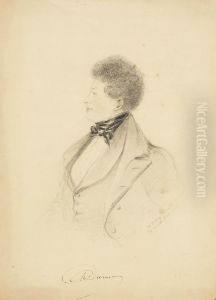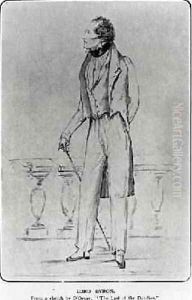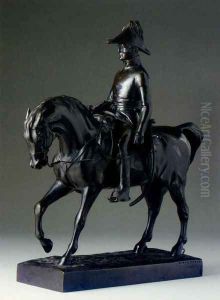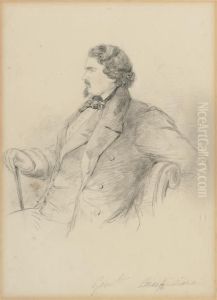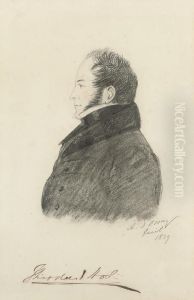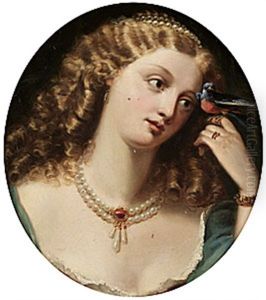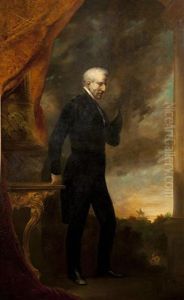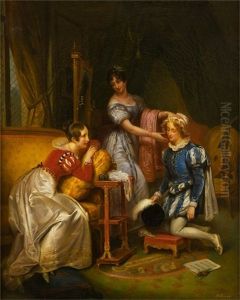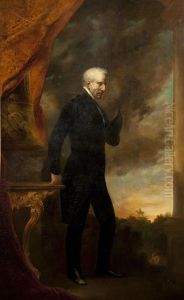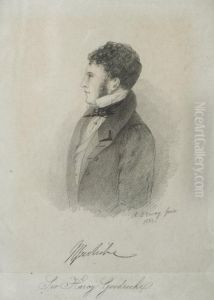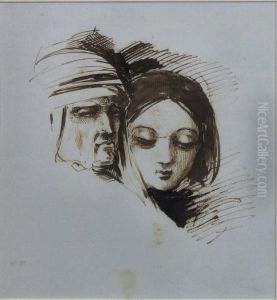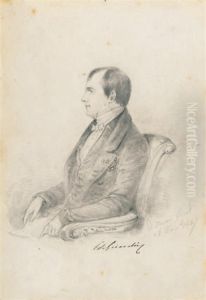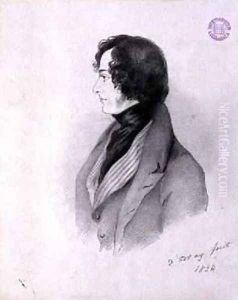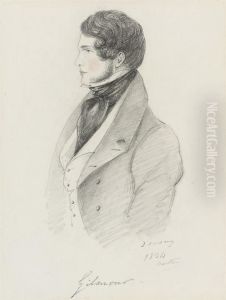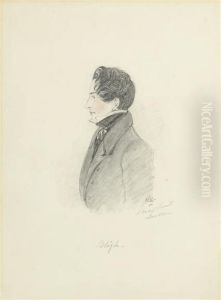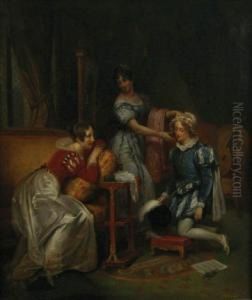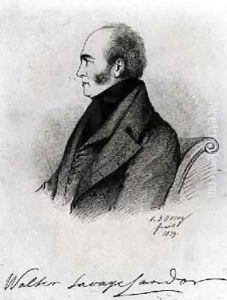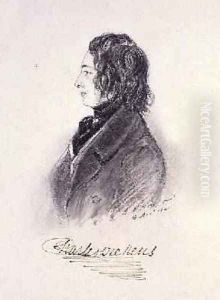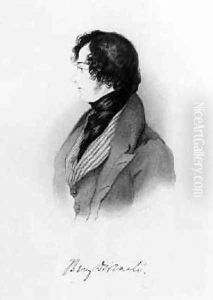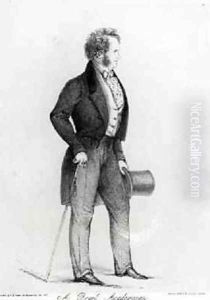Alfred d' Orsay Paintings
Alfred Guillaume Gabriel, Count d'Orsay was a man whose life story reads like a novel from the romantic era in which he flourished. Born on September 4, 1801, in Paris, France, into the aristocracy, d'Orsay quickly became renowned not just for his lineage but for his multifaceted talents and his influential role in the artistic and social circles of 19th-century Europe.
D'Orsay's early years were marked by the typical education expected of someone of his standing, but it was his natural charm, good looks, and artistic talent that set him apart. His initial foray into public life was through the military, following in the footsteps of his father, an officer in Napoleon's army. However, d'Orsay's interests lay elsewhere, and he soon left the military to pursue his passions in the arts and society.
A pivotal moment in d'Orsay's life was his move to England in the early 1820s. It was there that he became a central figure among the British elite, captivating many with his elegance, wit, and artistic skills. D'Orsay was a skilled painter, particularly noted for his portraits, which remain a testament to his keen eye for detail and his ability to capture the essence of his subjects. His work was not limited to painting; he also dabbled in sculpture and was involved in the design of luxury items and jewelry, showcasing his versatile artistic talent.
Beyond his artistic pursuits, d'Orsay was a trendsetter in fashion and a celebrated figure in London's high society. His relationship with Lord Byron's friends and family, particularly with Lady Blessington, with whom he lived in a celebrated ménage, added to his fame and sometimes infamy. Their home became a salon that attracted the foremost literary, political, and artistic figures of the day, making d'Orsay a key influencer in cultural and social circles.
Despite his popularity and the admiration he garnered, d'Orsay's life was not without its challenges. Financial difficulties and the changing social landscape of the mid-19th century took their toll. Alfred d'Orsay died on August 4, 1852, in Chambourcy, France, leaving behind a legacy that is remembered for its brilliance as much as its complexity. His contributions to art and society during a period of great change in Europe continue to be celebrated, and his life remains a fascinating study of talent, aristocracy, and the power of personality in the romantic era.
